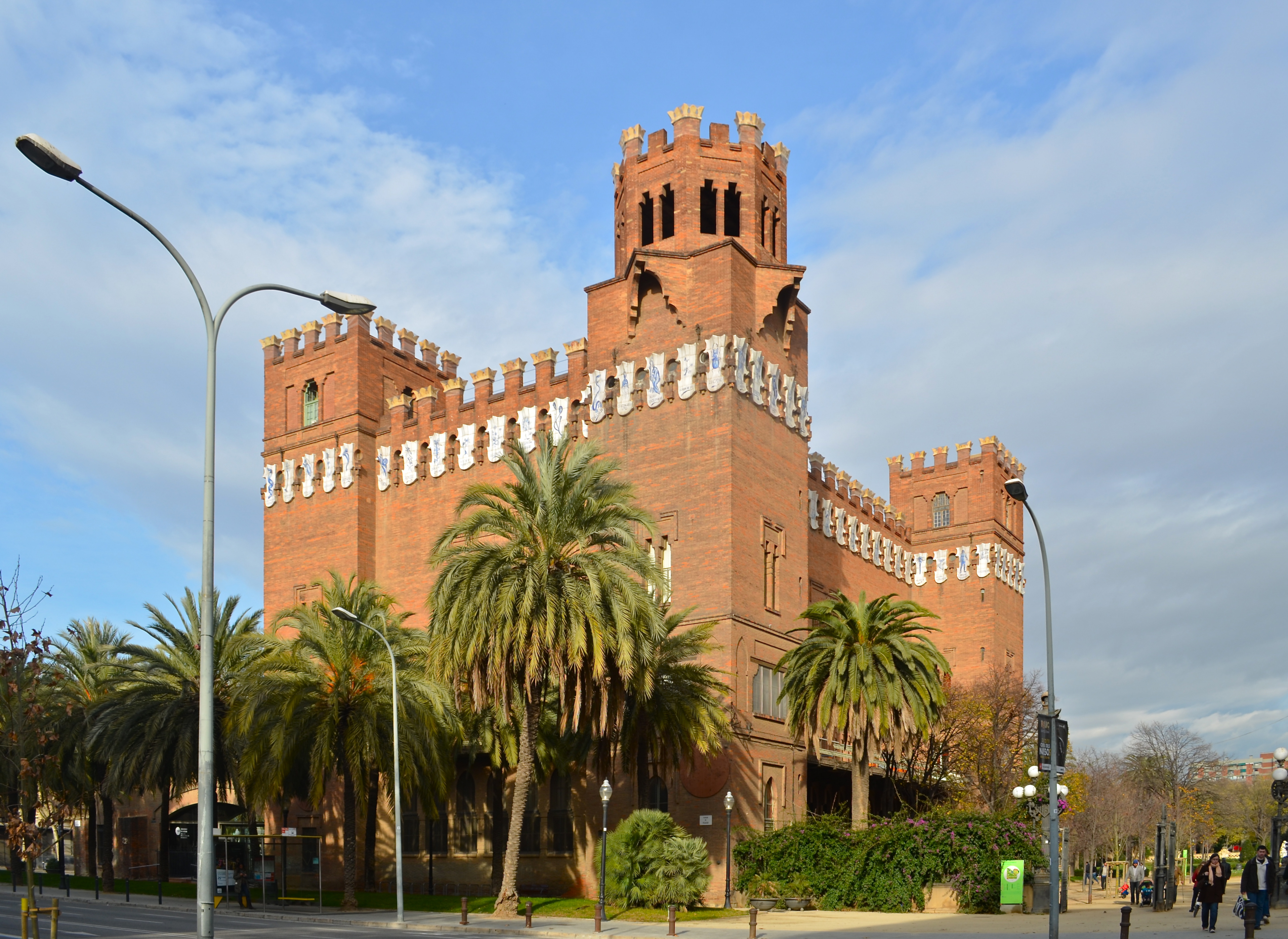Castell dels Tres Dragons on:
[Wikipedia]
[Google]
[Amazon]
 The Castle of the Three Dragons ( ca, Castell dels Tres Dragons, es, Castillo de los Tres Dragones), is the popular name given to the
The Castle of the Three Dragons ( ca, Castell dels Tres Dragons, es, Castillo de los Tres Dragones), is the popular name given to the
/ref> At the end of exhibition, Domenech installed an industrial arts workshop related to architecture, with the possible collaboration of Antoni Maria Gallissà i Soqué. Later it was dedicated to museum purposes as a museum of history, archeology, biology and natural sciences. During the
El museo de zoología de Barcelona cierra las puertas
''La Vanguardia''. Cultura. The building received a major restoration in the 1980s by architects Cristian Cirici, Pep Bonet and Carles Bassó.
modernisme
''Modernisme'' (, Catalan for "modernism"), also known as Catalan modernism and Catalan art nouveau, is the historiographic denomination given to an art and literature movement associated with the search of a new entitlement of Catalan cultu ...
building built between 1887–1888 as a Café-Restaurant for the 1888 Universal Exposition of Barcelona by Lluís Domènech i Montaner
Lluís Domènech i Montaner (; 21 December 1850 – 27 December 1923) was a Spanish architect who was highly influential on '' Modernisme català'', the Catalan Art Nouveau/Jugendstil movement. He was also a Catalan politician.
Born in Barcelo ...
. This name was probably adopted from the 1865 play by Serafí Pitarra.
History
In its time it was one of the main buildings of the exhibition, facing the now-disappeared Palace of Fine Arts. It was at the end of the main street running from theArc de Triomf
The Arc de Triomf () is a triumphal arch in the city of Barcelona in Catalonia, Spain. It was built by architect Josep Vilaseca i Casanovas as the main access gate for the 1888 Barcelona World Fair. The arch crosses over the wide central promenad ...
to the Parc de la Ciutadella
The (; "Citadel Park") is a park on the northeastern edge of Ciutat Vella, Barcelona, Catalonia, Spain. For decades following its creation in the mid-19th century, this park was the city's only green space. The grounds include the city zoo (o ...
. Work began in September 1887, but due to many delays, it was not ready on the day of the inauguration on April 8 and was delayed until August 17. For this reason Domènech i Montaner resigned as the responsible architect.Escudos del Castell dels Tres Dragons/ref> At the end of exhibition, Domenech installed an industrial arts workshop related to architecture, with the possible collaboration of Antoni Maria Gallissà i Soqué. Later it was dedicated to museum purposes as a museum of history, archeology, biology and natural sciences. During the
Spanish Civil War
The Spanish Civil War ( es, Guerra Civil Española)) or The Revolution ( es, La Revolución, link=no) among Nationalists, the Fourth Carlist War ( es, Cuarta Guerra Carlista, link=no) among Carlists, and The Rebellion ( es, La Rebelión, link ...
it was closed, after suffering some bombing damage by Francoist aviation. From 1942 to 1945 it was a dining hall for Social Aid, and later returned to its function as the Zoology Museum of Barcelona, in which capacity it served, with some interruptions, from 1920 to 2010, when the collection were dismantled and relocated to the new Museum of Natural Sciences of Barcelona
The Museum of Natural Sciences of Barcelona (in Catalan, ''Museu de Ciències Naturals de Barcelona''; in Spanish, ''Museo de Ciencias Naturales de Barcelona'') is a natural history museum located in Barcelona, Spain.
History
The Museum was cre ...
(in Catalan: ''Museu de Ciències Naturals de Barcelona'') at the Forum Building
The Forum Building ( ca, Edifici Fòrum, ; es, Edificio Fórum), is an architectural landmark in Barcelona designed by the Swiss architects Jacques Herzog and Pierre de Meuron (Herzog & de Meuron).
The building is triangular in shape, measuring 1 ...
.Quelart, R. (28 de mayo de 2010El museo de zoología de Barcelona cierra las puertas
''La Vanguardia''. Cultura. The building received a major restoration in the 1980s by architects Cristian Cirici, Pep Bonet and Carles Bassó.
Building
It is built with brick and sheet iron, and is a castle-shaped building crowned with battlements. The floor is almost square, with four towers at the corners and perimeter walkways running between a double facade. It has an innovative transparent structure of brick and iron, something similar to that which appeared in the proposal byHendrik Petrus Berlage
Hendrik Petrus Berlage (21 February 1856 – 12 August 1934) was a Dutch architect. He is considered one of the fathers of the architecture of the Amsterdam School.
Life and work
Hendrik Petrus Berlage, son of Nicolaas Willem Berlage and An ...
in his project for the Amsterdam Stock Exchange.
The decoration, mostly in ceramic, features paintings by Joan Llimona and Alexandre de Riquer (1888), and Pius Font i Quer and Joan Baptista Aguilar-Amat (1927), sculptures designed by Antoni Vilanova and executed by Alfons Juyol (1888) and the Gonzalez Brothers (1927 ), and ceramics from the nearby Pujol i Bausis factory. Decorative elements can be seen on the battlements, where blue-on-white, shield-shaped panels depict a series of plants and animals, including a number of drinks and liquors. The stained glass windows, now partially lost, were the work of Antoni Rigalt i Blanch.
See also
*List of Modernisme buildings in Barcelona
The following is a partial list of the main '' Modernista'' (Catalan art nouveau) buildings located in Barcelona
Barcelona ( , , ) is a city on the coast of northeastern Spain. It is the capital and largest city of the autonomous community ...
References
{{coord, 41.3881, N, 2.1834, E, source:wikidata-and-enwiki-cat-tree_region:ES, display=title Buildings and structures in Barcelona Buildings and structures completed in 1888 Modernisme architecture in Barcelona Art Nouveau restaurants Azulejos in buildings in Catalonia World's fair architecture in Barcelona